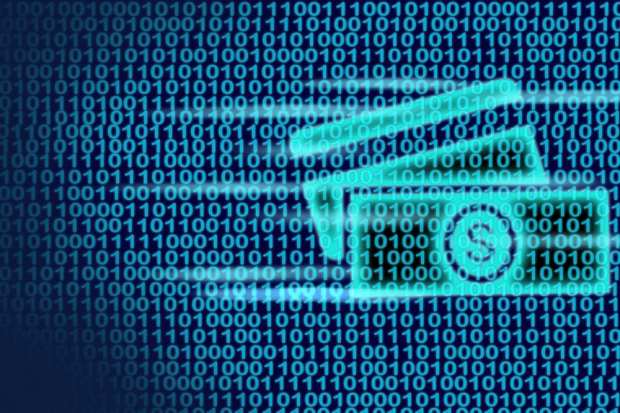Tailwinds Gather For Digital Dollars, Digital Bank Accounts (At The Fed)

The stimulus checks — some of them, anyway — are coming, via direct deposit, to tens of millions of Americans’ bank accounts over the next several weeks.
But the trillions of dollars intended to help shield individuals, families and businesses from the economic ravages of the coronavirus are still dependent (in some ways) on decades-old conduits that show just how creaky the process is for getting emergency funds where they need to go.
The digital dollar may still be on the drawing board, at least for now. Last month, a draft version of the stimulus bill, written up by House Democrats, would have created a digital dollar, but it was not ultimately included in the final legislation that went on to be passed.
The draft text of that digital dollar proposal indicated that the digital dollar would have been “a balance expressed as a dollar value consisting of digital ledger entries that are recorded as liabilities in the accounts of any Federal Reserve bank; or an electronic unit of value, redeemable by an eligible financial institution (as determined by the Board of Governors of the Federal Reserve System).”
In other words, the recipients would create checking accounts at the Federal Reserve Banks (there are 12 of them). Direct funding could find its way into these accounts, and would be faster than the system that currently exists — direct deposits are being done through bank accounts that are on record with the government, yes, but only for those who have had at least some history of filing taxes with the IRS and who have requested direct deposit in the past. For those who have not provided direct deposit information to the IRS in recent years, checks — the paper kind — will be cut and sent to recipients.
A Treasury-issued digital dollar would be inherently different than, say, the Libra project, which debuted last summer as a consortium backed by a number of companies (with Facebook the presumptive face of the digital currency) which in turn would have been backed by a basket of currencies across the globe. This time around, the digital dollar would be a greenback, done in bits and bytes.
There’s at least some tailwind for digital dollars to gain traction in the current and post-COVID-19 world. Digital transactions, of course, are more hygienic than wielding bills and coins. In one bit of anecdotal evidence, one PYMNTS writer in Brooklyn has seen an increasing reluctance from merchants (the ones who are open, anyway) to take cash at all.
Digital fiat would have the full faith and credit of the central banking system. And despite the fact that cryptocurrency purists may look toward decentralization and an “alternative” to central bank policy, it should be noted here that the dollar remains the conduit to social safety nets, to emergency funds, to, well, everyday commerce.
Earlier this month, the Bank of International Settlements (BIS), which has more than 600 member financial institutions and central banks spanning 60 countries, took note of changing consumer attitudes toward cash in a report titled “COVID-19, Cash and the Future of Payments.” Simply stated, consumers are wary, whether or not cash increases the risk of exposure to the coronavirus. And as for card payments: “Scientific evidence suggests that the probability of transmission via banknotes is low when compared with other frequently-touched objects, such as credit card terminals or PIN pads.”
Against that backdrop, said the BIS: “Resilient and accessible central bank operated payment infrastructures could quickly become more prominent, including retail central bank digital currencies.” But the same report cautioned against a “payments divide” between those with access to digital payments, and those without such access, including unbanked and older consumers. That divide, we surmise, could be at least somewhat bridged by direct accounts at Fed banks, and IDs done digitally too.
As noted in this space, Philipp Pointner, chief product officer at Jumio, predicted there will be a shift from paper and plastic documents toward digital ID verification. In an interview, discussing digital IDs with PYMNTS’ Karen Webster, he said there could be a tailwind created through the global consortium of passport-issuing agencies.
“If they develop a funnel for digital passports, that will automatically ‘trickle down’ and be adopted by all of the different countries,” Pointner said of those agencies. Digital passports can eventually be part of digital “identity wallets,” that can be used for verification.
